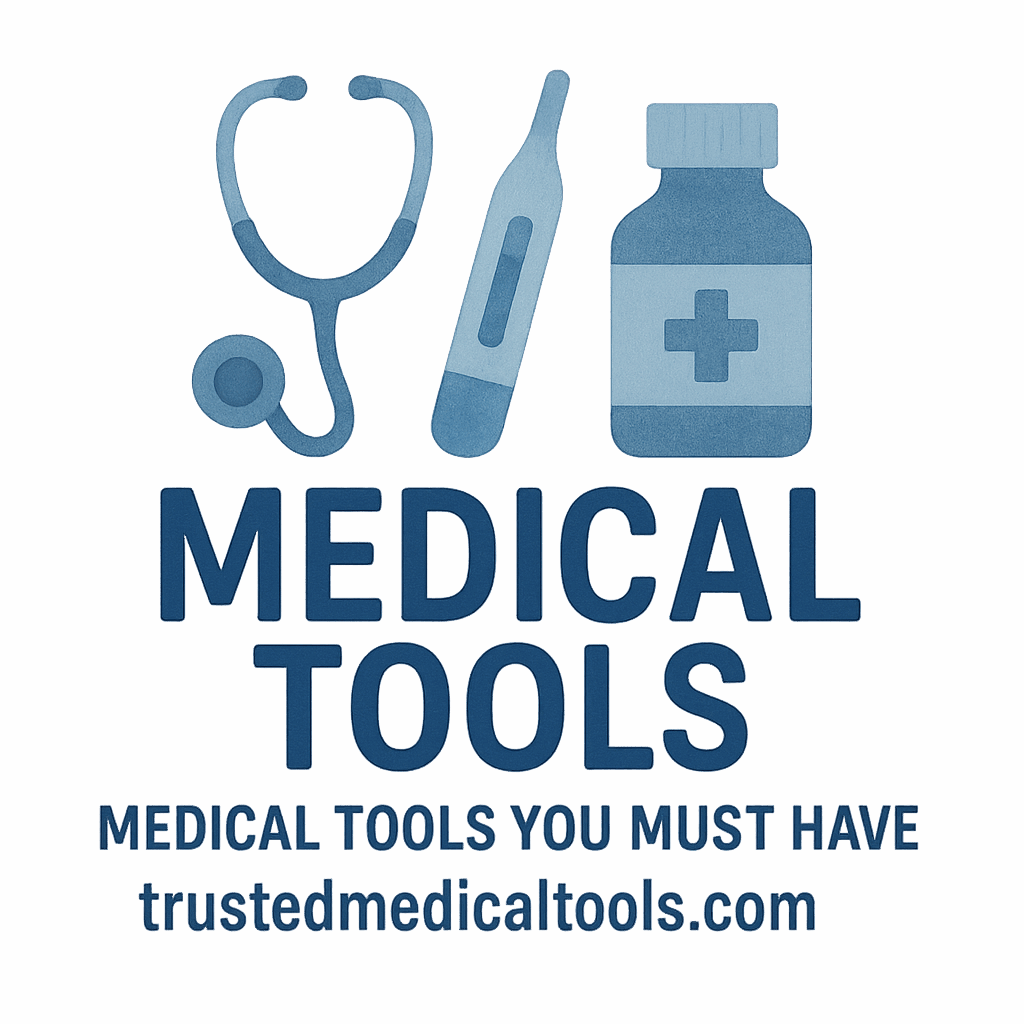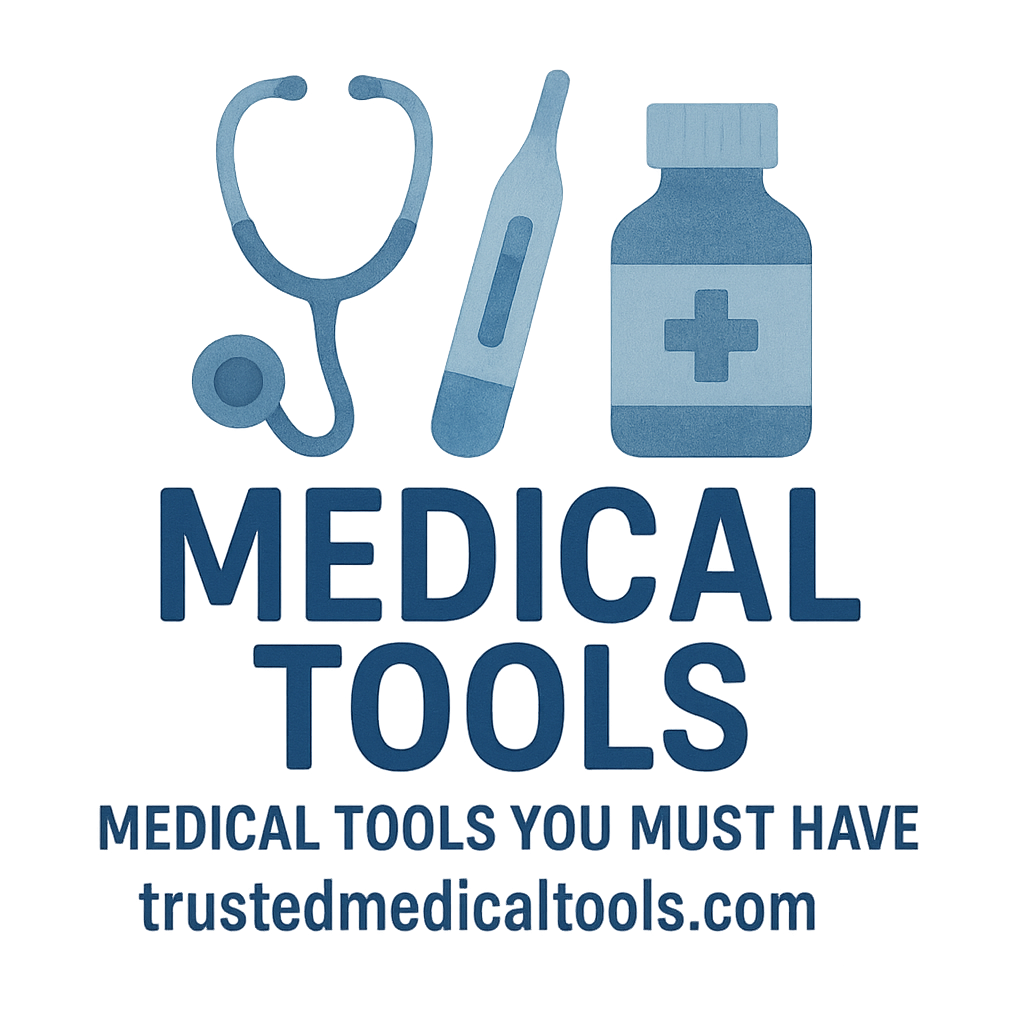Introduction: Why You Need Medical Tools at Home
Emergencies can happen anytime—whether it’s a sudden fever, a scrape from a fall, or an unexpected allergic reaction. Being prepared at home with the right medical tools can make a huge difference. Having the right tools not only helps you handle minor injuries and health issues efficiently but also provides peace of mind, knowing that you’re ready for emergencies. In this article, we will explore 9 inexpensive medical tools for home emergencies that every household should consider investing in.
1. Digital Thermometer: A Must-Have for Every Household
Why a Digital Thermometer is Essential
One of the first tools you’ll need when any family member feels ill is a digital thermometer. Unlike mercury thermometers, which can be dangerous and inaccurate, digital thermometers provide quick, accurate readings in just a few seconds. Whether you’re checking for a fever or monitoring a chronic condition, a thermometer is essential for keeping track of health.
Choosing the Best Digital Thermometer
When purchasing a digital thermometer, it’s important to choose one that is easy to use and offers accurate readings. Look for thermometers with clear digital displays and fast readings. Some models even offer non-contact temperature readings, which is a great feature, especially if you’re monitoring fevers in babies or small children. A quality thermometer can be found at affordable prices, making it an investment that won’t break the bank.
For more information on medical tools, check out this Buying Guide.
2. First Aid Kit: The Basics of Emergency Preparedness
What Should Be Included in Your First Aid Kit?
A well-stocked first aid kit is a must-have for any home. It should include a variety of items to treat common injuries such as cuts, bruises, burns, and sprains. A basic first aid kit typically contains:
- Adhesive bandages of various sizes
- Gauze pads and bandages
- Antiseptic wipes or ointments
- Scissors and tweezers
- Pain relievers (e.g., ibuprofen)
- Elastic bandage (e.g., for sprains)
How to Use Your First Aid Kit Effectively
Knowing how to use the items in your first aid kit is equally important. For instance, understanding how to properly clean and bandage a wound can prevent infections and speed up healing. Take a first aid class or refer to a first aid manual to ensure you’re prepared when emergencies occur.
For more tips on home health care, visit Home Essentials.
3. Blood Pressure Monitor: Keeping Track of Heart Health
The Importance of Monitoring Blood Pressure at Home
High blood pressure (hypertension) is a silent killer. It often has no obvious symptoms, but over time, it can lead to serious heart problems. Owning a blood pressure monitor allows you to keep track of your heart health, especially if you’re at risk for hypertension or already diagnosed with it.
How to Choose the Right Blood Pressure Monitor
When selecting a blood pressure monitor, choose one that is easy to use, accurate, and comfortable. Automatic cuff monitors are a great option for home use because they inflate with the push of a button. Be sure to check the size of the cuff to ensure it fits your arm properly.
For more on monitoring your health, check out Monitoring Devices.

4. Pulse Oximeter: A Quick Check for Respiratory Health
Why You Should Have a Pulse Oximeter
A pulse oximeter is a small, inexpensive device that measures your blood oxygen levels. This tool is especially important for individuals with respiratory conditions like asthma, COPD, or COVID-19. It can quickly alert you to any drops in oxygen levels, which can be crucial for timely medical intervention.
How to Use a Pulse Oximeter at Home
Simply clip the pulse oximeter onto your finger, and it will display your oxygen saturation and heart rate in seconds. If your oxygen levels drop below 90%, it may be a sign that you need immediate medical attention.
For more about respiratory health tools, visit DIY Health Check.
5. Ice Pack or Heat Pad: Managing Pain and Swelling
When to Use Ice vs Heat for Injuries
Whether you’re recovering from a sprain, bruise, or muscle pain, having an ice pack or heat pad handy can help alleviate discomfort. Ice packs are great for reducing inflammation and swelling, while heat pads can help soothe tight muscles or chronic pain.
Choosing the Right Ice Pack or Heat Pad for Your Home
Choose ice packs that are flexible, so they mold to the area you’re treating. For heat pads, make sure they are safe to use and have an automatic shut-off feature to prevent burns. You can also opt for reusable packs that can be used multiple times.
For more on managing pain at home, explore Home Care.
6. Bandages and Gauze: Wound Care Essentials
Different Types of Bandages and Their Uses
Bandages and gauze are key components of any first aid kit. They help protect wounds from infection and assist in the healing process. There are various types of bandages, including adhesive bandages, gauze pads, and elastic bandages, each suited for different types of injuries.
How to Apply Bandages and Gauze Correctly
Properly applying bandages is essential to ensure a wound stays clean and safe from infection. Start by cleaning the wound, applying any necessary ointments, and then covering it with gauze or a bandage. Be sure not to wrap the bandage too tightly, as this can restrict blood flow.
For more information on bandages, visit First Aid Box.
7. Thermometer Strips: Quick Temperature Check for Kids
Why Thermometer Strips Are Convenient for Parents
Thermometer strips are a quick and easy way to check a child’s temperature without any fuss. These strips are particularly useful for babies and toddlers who might be too restless to use a digital thermometer. Simply place the strip on your child’s forehead, and it will give a quick temperature reading.
Where to Buy the Best Thermometer Strips
Thermometer strips are widely available at pharmacies, grocery stores, and online. Look for strips that provide accurate readings and are gentle on the skin.
8. Antiseptic Solutions: Preventing Infection at Home
Why Antiseptic Solutions Are Vital for Home Emergencies
Having antiseptic solutions like hydrogen peroxide or alcohol on hand is essential for cleaning wounds and preventing infections. These solutions help kill bacteria and ensure that injuries heal properly.
Best Practices for Using Antiseptic Solutions
Always clean the wound gently with the antiseptic solution, and avoid overuse, as it can irritate the skin. After cleaning, apply a bandage to protect the wound.
9. Alcohol Wipes and Cotton Swabs: Easy Tools for Quick Cleaning
The Role of Alcohol Wipes in Emergency Care
Alcohol wipes are a great tool for quickly cleaning minor cuts, scrapes, or even disinfecting medical tools. They are small, portable, and easy to use in emergencies.
When to Use Cotton Swabs in Medical Emergencies
Cotton swabs are perfect for applying ointments or antiseptics to small wounds. They allow you to clean and treat injuries with precision.
Conclusion: Preparing for Emergencies at Home
Emergencies happen when you least expect them, and being prepared can make all the difference. By having these inexpensive medical tools for home emergencies, you can confidently handle minor injuries and health issues before they become more serious. It’s about being proactive, having the right tools, and knowing how to use them.
For more information on medical supplies for your home, explore Health Equipment.
FAQs: 7 Common Questions About Inexpensive Medical Tools for Home Emergencies
- What are the most essential medical tools for home emergencies?
- A first aid kit, thermometer, blood pressure monitor, and antiseptic solutions are all must-haves.
- Can I use a digital thermometer for all ages?
- Yes, digital thermometers can be used for all ages, though some models are specifically designed for babies and children.
- How often should I check my blood pressure at home?
- If you have high blood pressure, it’s recommended to check it at least once a day. If you don’t have a condition, checking it once a week can be sufficient.
- How do I know if my pulse oximeter is giving an accurate reading?
- Make sure your finger is clean and free of nail polish. Follow the manufacturer’s instructions for accurate readings.
- What should I keep in my first aid kit?
- Your kit should include bandages, gauze, antiseptic wipes, tweezers, scissors, and over-the-counter pain relievers.
- Are thermometer strips accurate?
- Thermometer strips provide a quick estimate, but they may not be as accurate as digital thermometers.
- How do I store my medical tools?
- Store all medical tools in a cool, dry place and make sure they’re easily accessible in case of an emergency.


